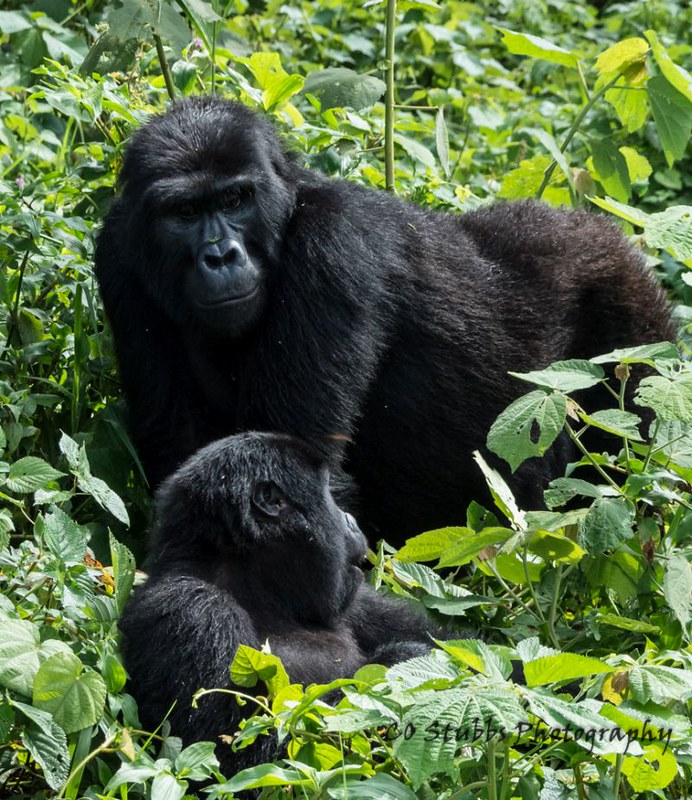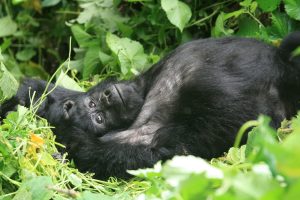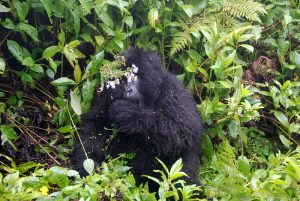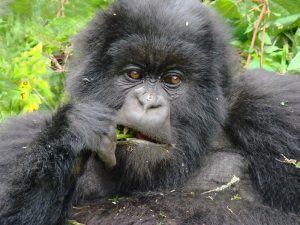How Do Gorillas Mate, Court, and Reproduce?
How do Gorillas Mate Courtship and Reproduce? Gorillas, the largest living apes, inhabit the verdant forests of Central and Eastern Africa. These largely herbivorous giants share approximately 98% of their DNA with humans, making them one of our closest relatives. There are two main species of gorillas: Eastern and Western. Each species has two subspecies: the mountain gorillas and eastern lowland gorillas (Eastern species), and the cross river gorilla and western lowland gorilla (Western species).
Gorilla Groups and Family Hierarchy
A typical gorilla group includes infants, juveniles, adult males and females, and a dominant male who leads and guides the family. These groups generally consist of about thirty individuals and are usually peaceful, with minimal internal conflicts. Interactions between different gorilla groups are rare, except among the western lowland subspecies. External confrontations by lone males or other groups can be violent, but the dominant silverback, with the help of other mature males, defends the family.
Breeding in Gorillas
In gorilla breeding customs, the dominant male, known as the silverback, mates with all the females in the group. Mating can occur year-round and is typically initiated by the females, regardless of their estrus cycle. Both Western and Eastern gorillas usually mate while facing the same direction, although mountain gorillas have been observed mating face-to-face.
Sexual Maturity and Reproduction
Female gorillas reach sexual maturity between 10 and 12 years old, with ovulation starting around six years, though they remain infertile until they are fully mature. Many females leave their father’s group to prevent inbreeding. Males, upon reaching maturity, often become loners or join bachelor groups before attempting to attract females from other groups.
The dominant silverback forms strong bonds with females, but as he ages and his reproductive cycle ends, females may leave to join other groups. Some females stay loyal to him until he dies, after which they typically join other groups to protect their offspring.
Mating Process
Mating can occur year-round, initiated by the female when she is sexually active. The dominant silverback may also initiate mating by approaching the female and making a display. If the female does not respond positively, he may become aggressive. Mating occurs on the ground, with the female kneeling and the male on top, although some subspecies like the mountain gorilla have been observed mating face-to-face.
Identifying a Female Ready to Mate
Unlike chimpanzees, female gorillas do not show physical changes to indicate readiness to mate. A female initiates mating by gently approaching the male, pressing her lips together, and making prolonged eye contact. If the male does not respond, she may slap the ground to attract his attention. If he remains unresponsive, she may mate with subordinate males in the group.
Research
A study in 1982 revealed that aggression from a silverback towards a specific female could compel her to initiate mating even when not in estrus.
Mating for Reproduction
Gorillas primarily mate for reproduction. Females may mate to win favor with the silverback and prevent him from mating with other females. Pregnant females may mate to stop the male from impregnating others. Silverbacks prefer mating with experienced adult females, leading to competition among the females for his attention.
Reproduction, Birth, and Parenthood
After successful mating, the female experiences an 8.5-month gestation period and gives birth approximately every four years. She will give birth in the morning, with signs like uneasiness and loss of appetite preceding labor. A female gorilla may give birth to 6-8 offspring in her lifetime, though not all will survive to maturity. The silverback ensures that the babies are accepted and protected within the group.
Breastfeeding and Weaning
For the first four months, the infant is carried by the mother and suckles every three hours. By five months, the infant gains confidence and rides on the mother’s back. At one year, the baby can move a short distance from the mother. Weaning occurs around 2.5 years, but the infant may continue to nurse until about four years old. Once weaned, the young gorilla becomes independent, and the mother resumes ovulating. How do Gorillas Mate Courtship and Reproduce
Infant Mortality
Infant mortality is high, with nearly half not reaching adulthood. Causes include:
- Changes in group leadership, leading to the death of nursing infants by new silverbacks.
- Trauma, responsible for 56% of infant mortality.
- Respiratory infections, causing 15% of infant deaths.
- Various illnesses, such as hepatic capillariasis, gastrointestinal parasitism, and lymphoid disease, particularly affecting mountain gorillas.




